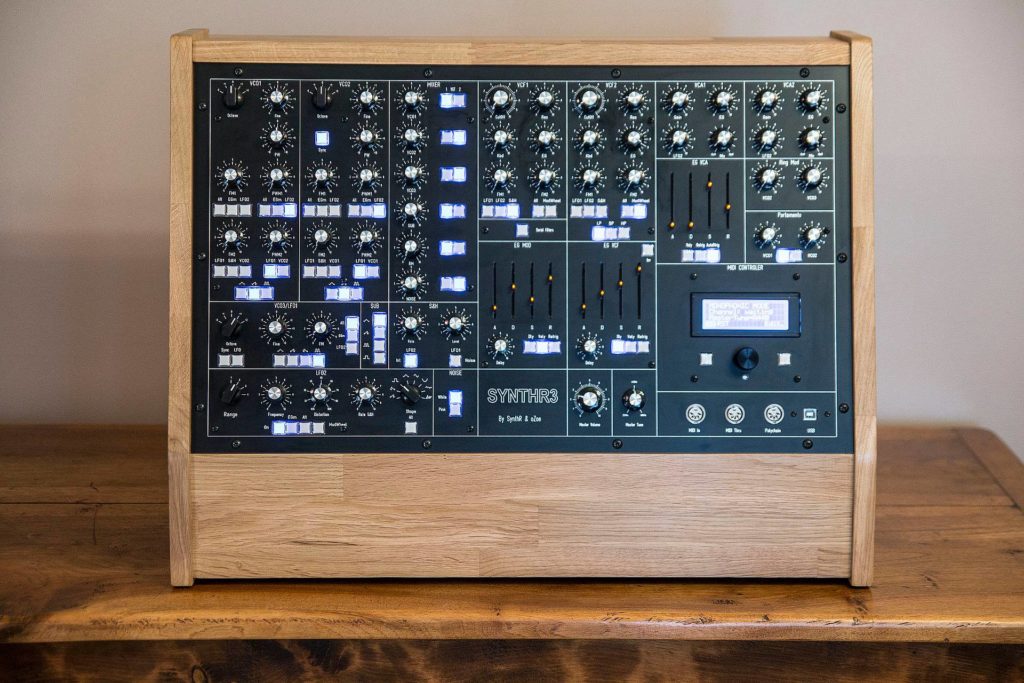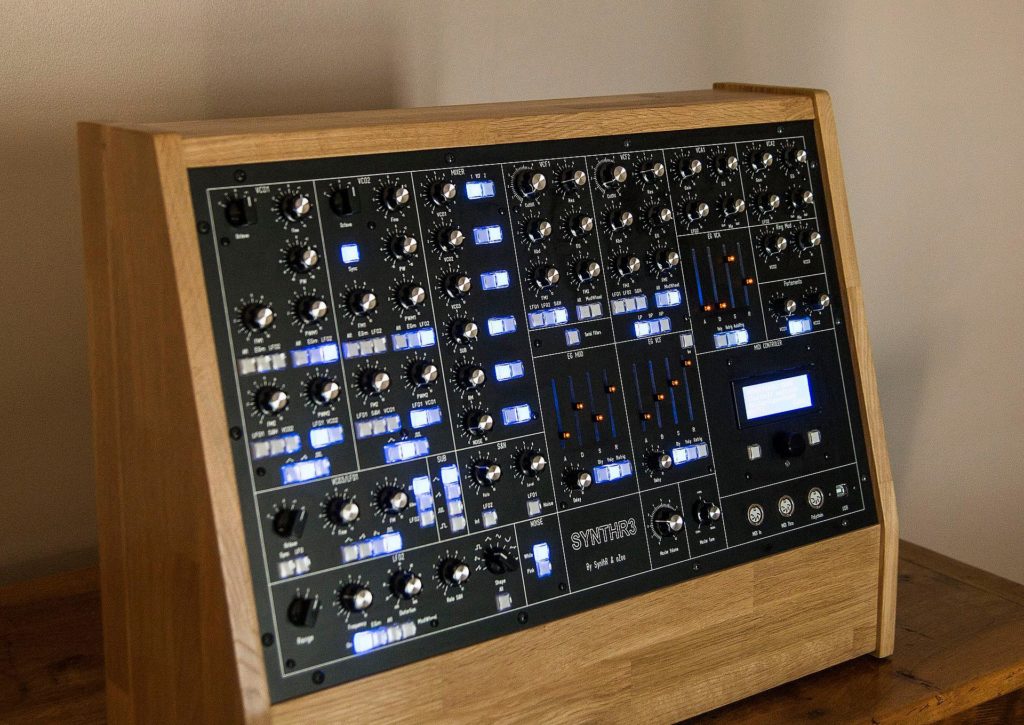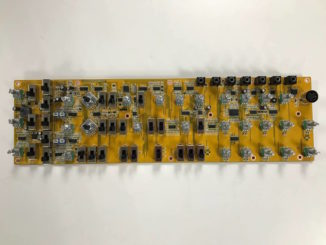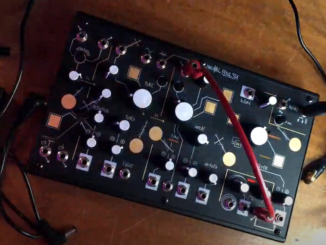SYNTHR3 is a new Boutique modular analog Synthesizer from France with a prewired engine, interchangeable filters, and MIDI control.
The French developer Rémy Wasselin aka SynthR has today introduced the SYNTHR3, a new pre-wired modular analog Synthesizer. The synth is built into a beautiful, compact wooden case with a black faceplate and bluish light buttons.
SYNTHR3 is full analog and can be used in different modes (3-voice paraphonic, 2-voice poly bi-timbral or mono). In full mono (3 oscillators + 1 or 2 filters), paraphonic (3 voices) and duophonic. That’s not all. It also includes an arpeggiator mode with a virtual keyboard split with many possible modes. So VCO 2 can be linked to the arpeggio or free to play. In the sequencer mode, you can memorize the sequences in mono or Para1 mode.
Flexible 3-VCO Design
SYNTHR3 has three analog oscillators, each with different waveforms and modulation options. VCO 1 and 2 outputs triangle, sawtooth and pulse with PW control. VCO 3 includes triangle, reverse sawtooth and square waveforms. The first two oscillators also have dedicated inputs for FM and PWM that can be achieved via LFO1, LFO2, envelope, aftertouch, S&H or VCO2 (cross-mod). Also, you can sync VCO 2 with VCO 1 and apply glide (portamento) to both oscillators.
The third oscillator also includes frequency modulation (FM) via an envelope, aftertouch or LFO2. Further, you have a sub-oscillator with two sub-octaves. Octave -1 outputs triangle, sawtooth, square while octave -2 only square. SYNTHR3 also includes a noise generator (white/pink) and a flexible ring modulator (VCO 1 – 2 and/or VCO3 mixable). All signals come together in the mixer and can be routed independently to VCF 1 or/and VCF2.
Many Legendary Filters In One Synth
The filter section SYNTHR3 offers two filters (VCF) and the customer can choose between many legendary Synthesizer filters: ARP 4072, SEM, Moog, Steiner, CEM3320, and SI2044. Very exciting is here that it’s possible to interchange the filters himself but the machine comes only with one filter set. So you can have per example a Moog filter in VCF1 and SEM in the second.
Known control options (cutoff, resonance, KBD, envelope amount and FM) are available for each filter. Further, you can modulate each filter with both LFOs and S&H but also control it via the aftertouch and mod wheel. The filters can be operated in parallel (each filter own VCA) or in serial routed to the VCA2. Every VCA is routed to output 1 and output 2. Both VCA offers two mod inputs, envelope, and LFO2.
Modulation
The modulation system is very simple in SYNTHR3. No patch cables, but a virtual system. Here you can activate or deactivate the modulation on the module using buttons. Available are 2 LFOs, 1 S&H generator, and 3 ADSR envelopes. Actually you only have one LFO, but you can put VCO 3 in an LFO mode with which you get a second that outputs triangle, sawtooth, reverse sawtooth and square. Also onboard are frequency modulation (FM) via a modulation envelope, aftertouch or LFO2.
The second LFO (0,050 Hz – 100 Hz) offers 4 frequency ranges, 2×8 waveforms including S&H, distortion and mod inputs for an envelope, mod wheel, and aftertouch. Besides these, it also includes a sample & hold generator that runs with own frequency or LFO2 and noise/LFO1. Last but not least, we have three ADSR envelopes (filter, amp & mod) each with velocity for sustain and retrigger options. ADSR 1 offers a reverse mode and ADSR 2 an addition auto retrigger feature controllable via A and D. According to the developer, it is possible to save the modulation routings.
Connections
On the front panel, it offers MIDI thru, MIDI input, MIDI poly chain, and a USB connection. On the backside, you can find two line outputs, 2 CV and Gate as well as clock outputs (LFO2 or MIDI). (I received the feature list in French and translate it for this article. If you use these information, please mention my website. Thanks in advance.
SYNTHR3 is available now for 1800€ and is only available in France. The product is handmade and the developer doesn’t have plans for exportation.
More information here: SynthR







Be the first to comment